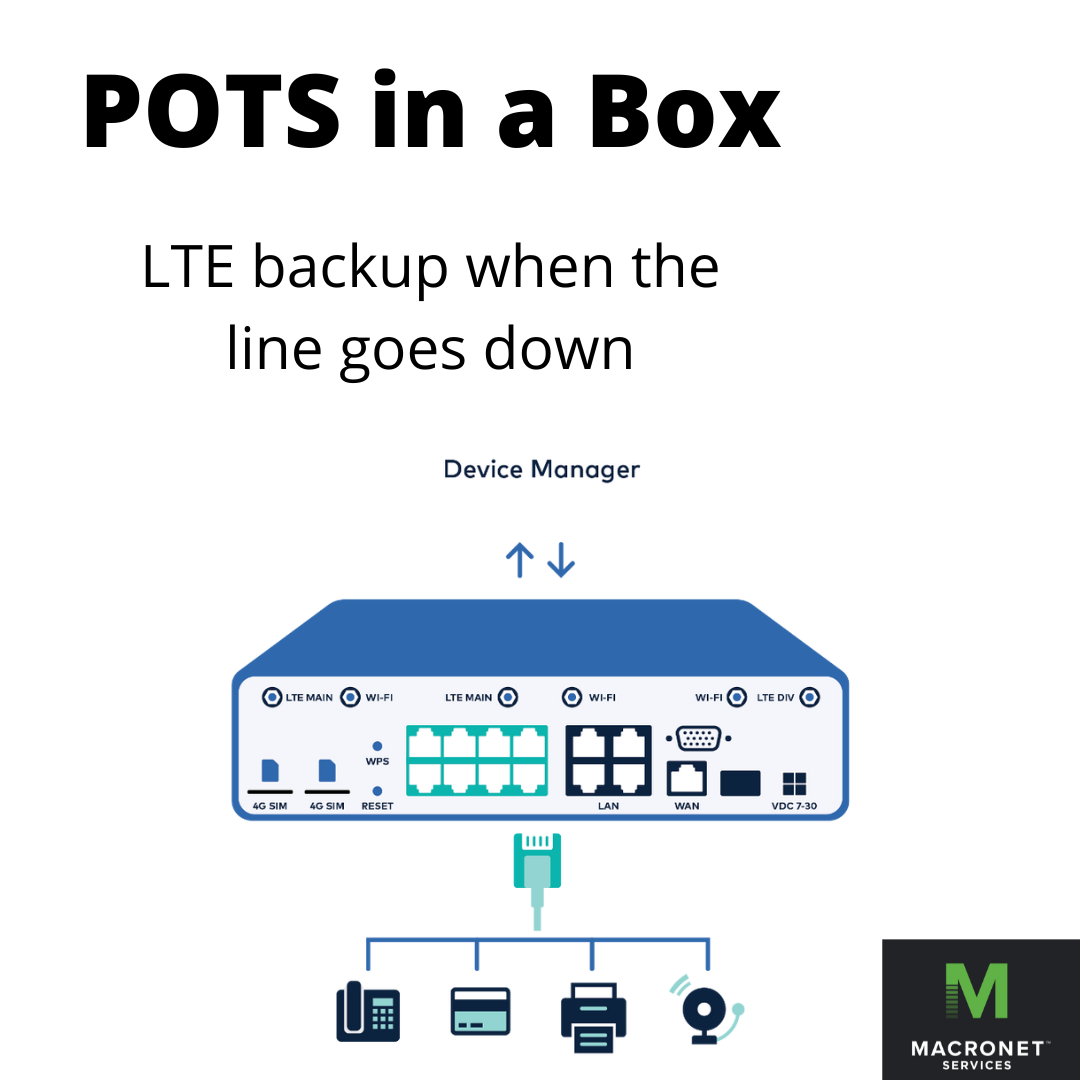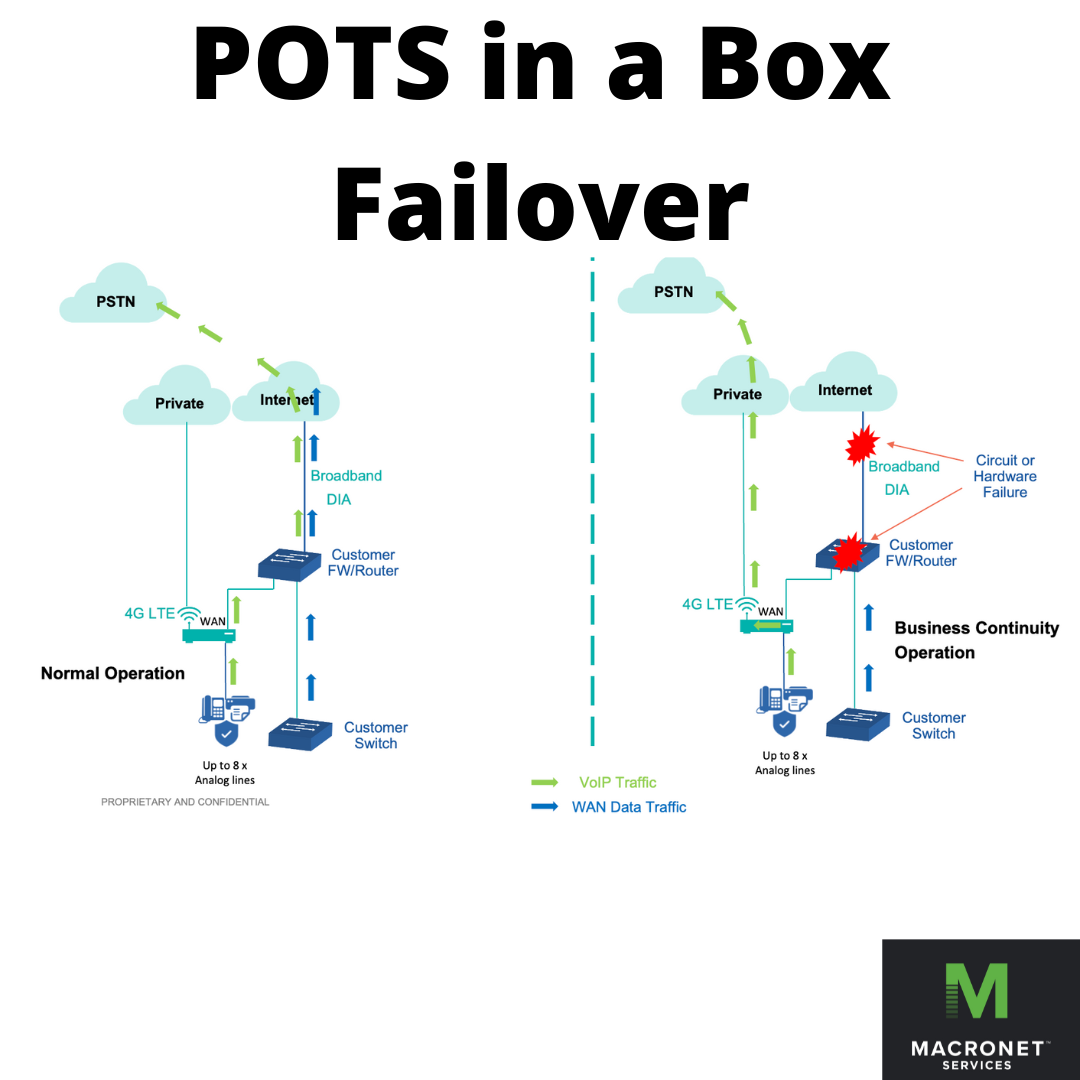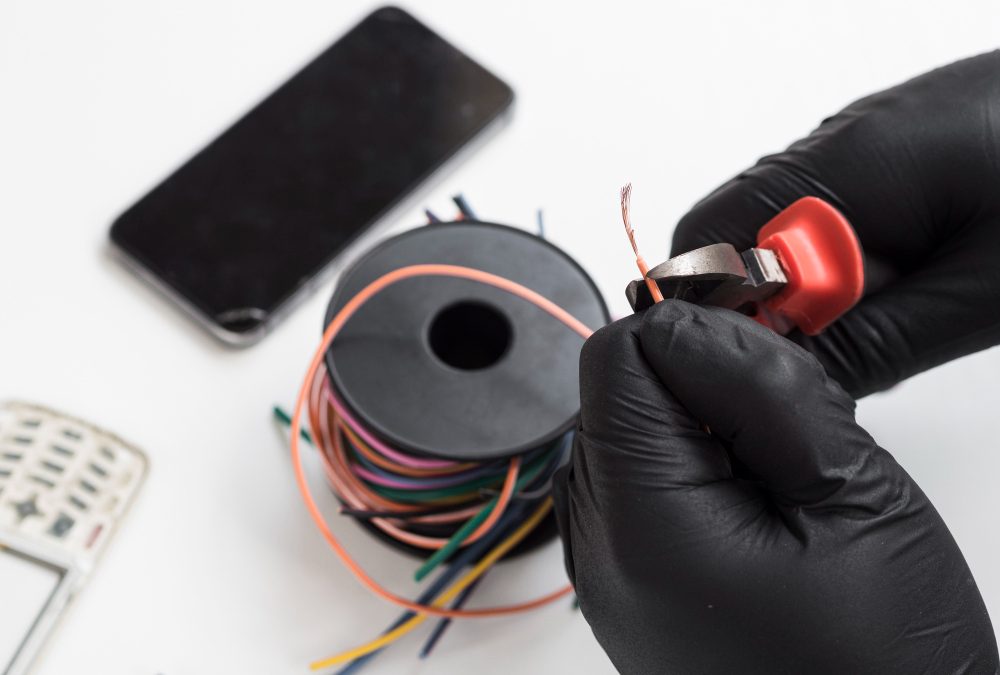Replace POTS Lines
The FCC POTS line mandate moniker has taken a life of its own with respect to transformation of this legacy copper environment. There is mass confusion in the industry around when, where, how you must replace your POTS lines with a replacement service based on the FCC-192 information.
There are many areas to consider not just the physical replacement of the copper lines but increased monthly recurring charges by the carrier if you stay on a legacy infrastructure.
If you are looking for POTS line replacement pricing you must look to lock in long-term rates, not the traditional month to month rates carriers offer using the copper lines in place. Also, if you are in the new construction space, be prepared with carriers refusing to install new physical copper outside plant to support your needs. A POTS Replacement option is your alternative however it’s very advantageous.
POTS replacement options to consider:
#1 Internet Peering:
Peering provides two or more disparate autonomous internet networks the ability to route traffic directly to each other. Typically, this exchange allows the providers to route directly without having to pay each other or a third party for this traffic over the internet. You do not need to deploy a BGP Peering Network with multiple internet vendors. (We’ll explain why shortly.). However, you should be concerned with the internet used with PIAB and that provider’s upstream peering. Why? If it’s unbalanced or does not have decent peering ratios, be warned, this could impact your POTS environment.
One way to lookup Peering useful looking glass tool is PeeringDB which allows anyone to see the overview of a carrier. Many will tout they are a “Tier-1” backbone but with a little digging you can see what’s really under the hood. Here’s an example of GTT’s AS3257 summary on PeeringDB. It provides great information on the amount of Prefixes, ASN and IXP across the globe. Equally, every organization looking to change/modify/improve their Wide Area Network should include their copper/POTS replacement needs in this equation. Add the line count and location(s) to your WAN RFP Template as you will want to make sure this factors into your design.
#2 Using a Telecom Consultant for POTS Replacement design
A Telecom consulting is a specialized area of consulting that focuses on providing advice and support to organizations in the telecommunications industry. The goal of telecom consulting is to help organizations optimize their operations, improve their performance, and stay ahead of the competition. In this blog, we will explore the role of telecom consulting, the benefits it provides, and the factors that organizations should consider when choosing a telecom consultant.
Telecom consultants play a crucial role in helping organizations stay ahead of the competition in the telecommunications industry. They provide a wide range of services, including:
- Strategic planning: Telecom consultants help organizations develop a comprehensive strategy for their telecommunications operations. They analyze the organization’s current operations, assess their strengths and weaknesses, and provide recommendations for improvement.
- Market analysis: Telecom consultants provide organizations with in-depth analysis of the telecommunications market. They evaluate market trends, analyze market segments, and identify opportunities for growth.
- Network design and optimization: Telecom consultants assist organizations in designing and optimizing their telecommunications networks. They evaluate existing networks, identify areas for improvement, and provide recommendations for network upgrades and expansions.
- Cost optimization: Telecom consultants help organizations reduce their telecommunications costs by identifying areas where they can improve efficiency and reduce expenses. They analyze bills, negotiate with suppliers, and implement cost-saving measures.
- Regulatory compliance: Telecom consultants assist organizations in ensuring that their telecommunications operations comply with all relevant regulations and standards. They help organizations navigate the complex regulatory landscape and ensure that they are meeting all compliance requirements.
The Benefits of Telecom Consulting
Telecom consulting provides numerous benefits to organizations in the telecommunications industry. Some of the most significant benefits include:
- Improved performance: Telecom consultants help organizations optimize their operations and improve their overall performance. They provide guidance on network design, cost optimization, and regulatory compliance, which helps organizations to operate more efficiently and effectively.
- Increased competitiveness: Telecom consultants help organizations stay ahead of the competition in the telecommunications industry. They provide in-depth analysis of the market, identify opportunities for growth, and assist organizations in developing strategies to remain competitive.
- Access to expertise: Telecom consultants bring a wealth of knowledge and expertise to organizations. They have a deep understanding of the telecommunications industry and can provide organizations with insights and guidance that they might not be able to obtain otherwise.
- Cost savings: Telecom consultants help organizations reduce their telecommunications costs by identifying areas where they can improve efficiency and reduce expenses. By optimizing their operations, organizations can reduce their costs and improve their bottom line.
- Reduced risk: Telecom consultants assist organizations in ensuring that their telecommunications operations comply with all relevant regulations and standards. This helps organizations to reduce the risk of regulatory penalties and fines and ensures that they are operating within the law.
Factors to Consider When Choosing a Telecom Consultant
When choosing a telecom consultant, there are several factors that organizations should consider to ensure that they are making the right decision. Some of the most important factors include:
- Experience: It is essential to choose a telecom consultant with extensive experience in the telecommunications industry. An experienced consultant will have a deep understanding of the industry and will be able to provide organizations with valuable insights and guidance.
Reputation: It is essential to choose a telecom consultant, not just someone who claims to have performed this type of work
#3 Know which POTS providers exist
Most proviers are ILEC or CLEC organizations throughout the United States. Here are some carriers you might work with who could possibly look to remove themselves from the POTS game.
Windstream POTS
Windstream POTS (Plain Old Telephone Service) is a traditional landline phone service that has been in use for over a century. Despite the growing popularity of VoIP and mobile services, POTS still plays an important role in modern communication networks, especially in rural and remote areas.
Windstream Communications is one of the largest telecommunication companies in the United States, providing a wide range of communication services to both residential and business customers. Windstream POTS is one of the company’s flagship products, offering reliable, cost-effective and easy-to-use phone service to millions of customers across the country.
Windstream POTS provides customers with a traditional telephone line that is connected to the public switched telephone network (PSTN). This line provides a direct connection to the local phone exchange, which then connects the customer to the rest of the world. Unlike VoIP services, which rely on the internet to make calls, POTS uses a dedicated network of copper wires that are specifically designed for voice transmission. This results in a high-quality voice connection that is free from the latency, jitter, and other issues that can affect internet-based phone services.
One of the biggest advantages of Windstream POTS is its reliability. Because it uses a dedicated network, POTS is less vulnerable to outages and service interruptions than internet-based phone services. This makes it ideal for customers who live in rural or remote areas, where internet connectivity can be patchy or non-existent. Additionally, POTS provides a direct connection to emergency services such as the 911, which can be critical in the event of an emergency.
Windstream POTS also offers a range of features that are designed to make life easier for customers. For example, customers can choose to add call waiting, caller ID, and voicemail to their phone line, which can help them manage their calls more effectively. In addition, Windstream POTS provides a range of international calling plans, making it easy and affordable for customers to stay in touch with friends and family overseas.
Another advantage of Windstream POTS is its cost-effectiveness. Compared to internet-based phone services, POTS is often much more affordable, especially for customers who make a lot of long-distance calls. This makes it an ideal choice for budget-conscious customers who are looking for an affordable phone service that provides reliable connectivity and a range of features.
POTS replacement with POTS in a Box (PIAB)
What does the POTS in a Box architecture look like?

POTS in a Box Advantages:
- Added redundancy: The device not only routes over the internet but has (2) onboard LTESIM cards if the connection is lost. We all know the internet has its failures, but this device doubles down with LTE backup to seamlessly keep service online.
- Onboard UPS Battery – This is a 24-hour backup battery should the power go out in a building; the service will switch to this power source. Unlike traditional POTS copper lines, you will need a power source for this box.
- Installation – Services can be operational quickly without added construction, unlike new copper installs.
- Expansion Ports – Each device can support 8 lines before another one is required. They are small and take up minimal room however if you need an additional line quickly with the 8 blocks, it’s a simple software change.
- Professional Tech Installs – Typically there are two technician dispatches, one to site survey the demarcation of the equipment and the second one to install the service. Most legacy phone lines have one dispatch from the carrier and if they are unaware of what is needed to turn up the service, it will only delay your ability to use it.
The Technical Specs on the POTS Device
- Connect with Wi-Fi, broadband and/or 3G/4G LTE
- Cellular can be the primary connectivity if Wi-Fi or broadband are not available, or act as a backup in the event of primary circuit failure
- The adapter can serve as a Wi-Fi access point
- With a connection to 3G/4G LTE cellular service, downtime is at the lowest possible level
- Dual SIMs provide added fail-over protection, perfect for 911 call completion assurance
- This device supports SIM cards from all major carriers (AT&T, Sprint/T-Mobile & Verizon)
- This device can handle up to 8 lines including voice, fax, elevator, and alarm lines.

Recent Posts
- Tier 1 vs Tier 2 vs Tier 3 ISPs Explained: The Complete Guide for IT Leaders
- America’s AI Action Plan 2025: What CEOs, CIOs, and CFOs Need to Know
- The AIoT Advantage: Harnessing the Convergence of Artificial Intelligence and the Internet of Things
- Quack AI Governance in the Age of Algorithmic Hype
- NVIDIA Corporation: A Strategic Analysis for Business Executives Navigating the AI Ecosystem
Archives
- August 2025
- July 2025
- June 2025
- May 2025
- April 2025
- March 2025
- February 2025
- January 2025
- December 2024
- November 2024
- October 2024
- September 2024
- August 2024
- July 2024
- June 2024
- May 2024
- April 2024
- March 2024
- February 2024
- January 2024
- December 2023
- November 2023
- October 2023
- September 2023
- August 2023
- July 2023
- June 2023
- May 2023
- April 2023
- March 2023
- February 2023
- January 2023
- December 2022
- November 2022
- October 2022
- September 2022
- August 2022
- July 2022
- June 2022
- May 2022
- April 2022
- March 2022
- February 2022
- January 2022
- December 2021
- November 2021
- October 2021
- September 2021
- August 2021
- July 2021
- June 2021
- May 2021
- April 2021
- March 2021
- December 2020
- September 2020
- August 2020
- July 2020
- June 2020
Categories
- All (19)
- Satellite (1)
- Artificial Intelligence (7)
- Travel (1)
- Sports (1)
- Music (1)
- News (275)
- Design (3)
- Clients (12)
- Uncategorized (1)
- Tips & tricks (25)
- Inspiration (9)
- Client story (1)
- Unified Communications (196)
- Wide Area Network (309)
- Cloud SaaS (60)
- Security Services (71)






